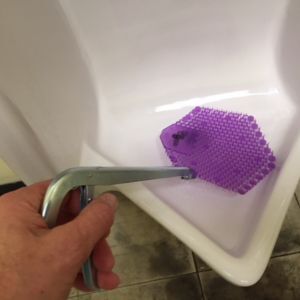Best Practices for Urinal Screens in Schools, Offices and Public Toilets
In high-use environments like schools, offices, and public toilets, urinals can quickly become a source of odour, hygiene complaints, and costly plumbing issues. Using urinal screens effectively is one of the easiest ways to improve the cleanliness and functionality of your washrooms.
Here’s how to get the most out of urinal screens in various New Zealand workplace and public settings.
Why Use Urinal Screens in High-Traffic Facilities?
Urinal screens serve several key purposes:
-
Prevent unpleasant odours
-
Catch debris before it enters the drain
-
Disperse enzyme cleaners to break down uric acid
Whether you’re maintaining school toilets or an office bathroom, urinal screens are an essential hygiene tool.
Want to understand more about why urinal screens matter in the first place? Check out our article: What Are Urinal Screens For? A Simple Guide for NZ Workplaces — it covers their purpose, how they work, and why they’re essential for keeping commercial washrooms fresh and hygienic.
Schools: Prioritise Durability and Odour Control
School bathrooms often face high usage and less consistent cleaning. Choose urinal screens that:
-
Have high-fragrance retention
-
Include built-in enzyme blocks
-
Are brightly coloured to increase visibility for maintenance staff
Tip: Set a routine replacement schedule — every 2–3 weeks is ideal for busy school terms.
Offices: Balance Hygiene and Aesthetics
In offices, cleanliness and smell impact staff satisfaction. Select screens that:
-
Offer anti-splash design to minimise floor mess
-
Are discreet in colour and fragrance
-
Include date tabs for easy changeover tracking
Pro Tip: Add a monthly calendar alert for screen changes to reduce the risk of odour buildup.
Public Toilets: Focus on Efficiency and Minimal Contact
Public restrooms, such as those in malls or transport hubs, require easy-to-maintain products. Use urinal screens that:
-
Include installation/removal handles
-
Can be swapped quickly by contractors
-
Work effectively in large-scale usage environments
Consider touch-free systems or disposable enzyme cartridges for better hygiene and faster servicing. For a deeper look into how to handle these products safely and efficiently, read our article: Do You Have to Touch Urinal Screens? A Hygiene Guide for Cleaners. It offers best practice tips for commercial cleaning teams across New Zealand.
General Best Practices
-
Replace screens every 2–4 weeks, depending on traffic
-
Train cleaning staff on safe handling (gloves, disposal bags)
-
Choose enzyme-based products for long-term odour and pipe protection
-
Keep signage visible in staff areas to encourage timely maintenance
Conclusion
From schools to office towers to public toilets, urinal screens play a vital role in keeping washrooms clean, fresh-smelling, and functional. Choosing the right screen and maintaining it properly is a simple upgrade with a big impact.
Explore Insinc’s full range of commercial urinal screens and cleaning solutions — trusted by Kiwi facilities for performance, hygiene, and ease of use.
https://www.insinc.co.nz/category/urinal-screens.html
Posted: Friday 31 October 2025





